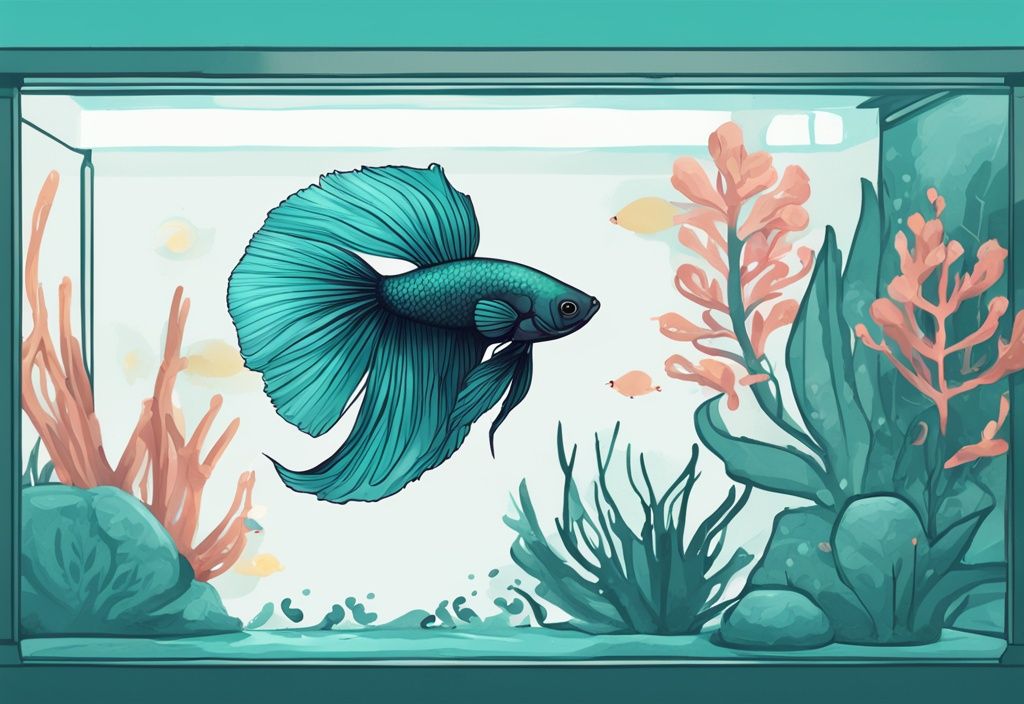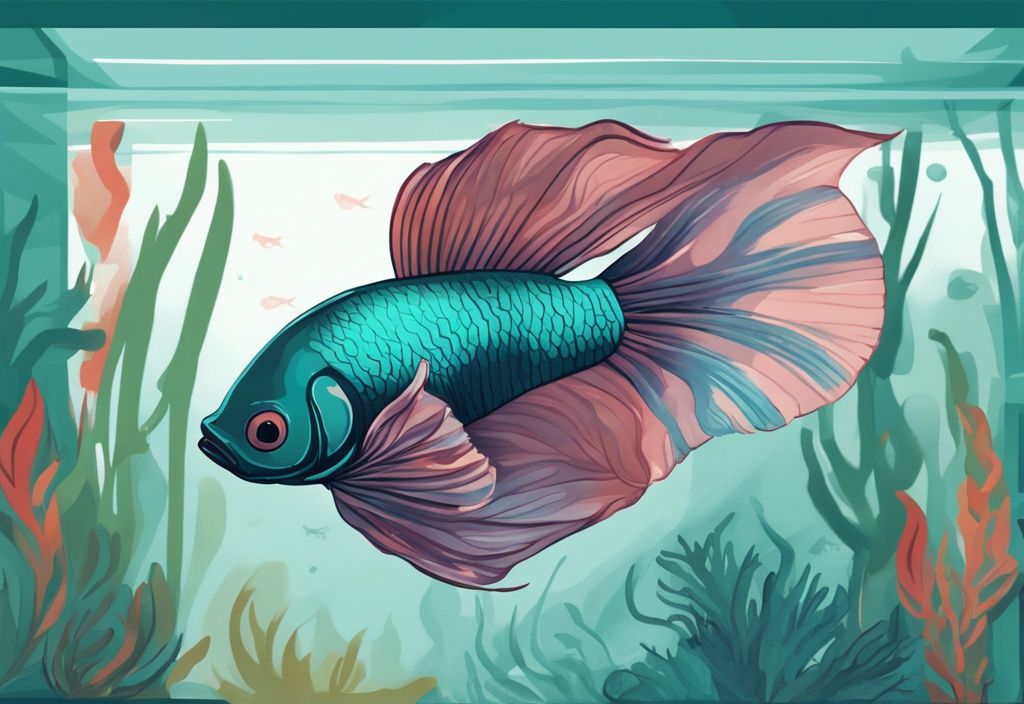Betta fish, with their vibrant colors and flowing fins, are a popular choice for aquarium enthusiasts. But a common question arises: Can these solitary beauties coexist peacefully with other fish? Picture a bustling neighborhood where everyone gets along—sounds idyllic, right? Yet, in the aquatic world, achieving such harmony requires understanding the behavior and temperament of betta fish. Known for their territorial nature, especially among males, bettas can be unpredictable when introduced to other species. This complexity often leads to misconceptions and debates within the aquarist community. Creating a peaceful environment for bettas involves more than just picking the right tank mates. It requires careful consideration of tank size, setup, and water conditions. In this guide, we’ll explore the nuances of betta fish cohabitation, debunk common myths, and provide practical tips for ensuring a thriving aquarium. Dive in to discover how to achieve a balanced and serene aquatic habitat for your betta fish and their companions.
Can Betta Fish Coexist with Other Fish Species?
Betta fish, known for their dazzling colors and elegant fins, are equally famous for their feisty nature. This aggression, particularly towards fellow bettas, stems from their territorial instincts. Such behavior can make it tricky to find suitable tank mates. Yet, with the right conditions, bettas can indeed share their aquatic home with other fish species.
Male bettas, in particular, have a reputation for being combative, often sparring with other males and occasionally even with females. This makes the selection of tank mates a critical task if you plan to keep a male betta in a community tank. Female bettas, on the other hand, tend to be more sociable and can live together in a group, known as a sorority. However, this requires a spacious tank to accommodate their territorial needs, allowing each fish to carve out its own space.
Creating a peaceful environment for bettas and their tank companions involves understanding and respecting the natural behaviors of bettas. It’s vital to design a habitat that reduces stress and aggression, ensuring all tank residents can flourish. With thoughtful planning and consideration, betta fish can successfully coexist with other compatible species, offering an aquarium experience that’s both vibrant and diverse.
Understanding Betta Fish Behavior
Betta fish, with their dazzling colors and elegant fins, are renowned not just for their beauty but also for their spirited and territorial nature. This characteristic is crucial when considering the question, “Can betta fish live with other fish?” Their aggression is most intense towards fellow bettas, especially males, as they instinctively guard their territory. Yet, this feisty demeanor can also target fish that resemble them or seem threatening.
Each betta is a unique individual, and their personality significantly influences their compatibility with other tank mates. Some bettas might display intense aggression, while others might surprise you with their tolerance, cohabiting peacefully with different species. This variability highlights the need to observe each betta’s behavior closely when planning a community tank.
To integrate bettas with other fish successfully, understanding these behavioral subtleties is essential. Recognizing signs of aggression and territoriality can help create a harmonious environment. By catering to the specific personality of each betta, aquarists can manage their interactions with other fish more effectively, ensuring a balanced and peaceful aquarium ecosystem.
Male vs. Female Betta Fish: Behavioral Differences
When pondering the question, “Can betta fish live with other fish?” it’s essential to dive into the fascinating behavioral differences between male and female bettas. Male bettas, with their dazzling colors and flowing fins, are like the peacocks of the aquarium world. However, these beautiful features come with a catch—heightened aggression. Males are often best kept alone or with tank mates chosen with the precision of a chess master to avoid conflict. Their territorial nature often leads to fiery displays, especially when another male enters their domain, making cohabitation with other fish a delicate dance.
On the flip side, female bettas present a more peaceful picture, offering more opportunities for cohabitation. Ensuring a clean environment is crucial, so learning how to change the water in a fish tank can be beneficial for maintaining harmony and health in your aquarium. Under the right conditions, female bettas can live together in groups known as sororities. Picture a harmonious sorority house, but underwater! This setup requires a spacious tank and a well-thought-out environment to maintain tranquility. Success hinges on a roomy tank filled with hiding spots and visual barriers to reduce territorial squabbles. Yet, keep a vigilant eye on the group dynamics, as even the most serene sorority can experience drama if the hierarchy is upset or the tank becomes crowded.
Ultimately, the question of whether bettas can live with other fish is akin to matchmaking—it’s all about the personalities involved and the environment created. While male bettas often prefer solitude or very specific companions, female bettas offer more flexibility for community tanks, provided their social structure is managed with care. Creating a balanced ecosystem in your aquarium is not just about the fish; it’s about crafting a peaceful underwater world where every finned friend can thrive.
Creating the Ideal Environment for Betta Fish Cohabitation
Betta fish, with their vibrant colors and flowing fins, can indeed share a tank with other fish. However, setting up a harmonious community requires careful planning and consideration of tank size, setup, and water conditions. Let’s explore how to create a thriving aquatic environment where bettas and their tank mates can coexist peacefully.

Importance of Tank Size and Setup
A spacious tank is the cornerstone of a peaceful betta community. Ideally, you should aim for at least a 10-gallon tank. This size offers enough room for each fish to establish its own territory, minimizing the risk of territorial aggression. Think of it as giving each fish its own little apartment within a bustling city. A good rule of thumb is to allocate one gallon of water per inch of fish, but more space is always better.
The tank setup is equally important. Incorporate plenty of hiding spots and aquatic plants. These elements not only beautify the tank but also provide essential refuge for fish. Just like we need a quiet corner to relax, fish benefit from having spaces to retreat and reduce stress. Plants add complexity to the habitat, acting as natural barriers and visual breaks, which can help mitigate aggression.
Water Conditions: Temperature and pH Levels
Maintaining optimal water conditions is crucial for the health of both bettas and their tank mates; regular maintenance is key to keeping the aquarium environment safe, which you can learn more about in this guide on routine aquarium maintenance. Betta fish are tropical creatures that thrive in warmer waters, ideally between 78-80 degrees Fahrenheit. Keeping the water consistently warm ensures a stable environment for all inhabitants.
Equally important is the pH level, which should be maintained between 6.5 and 7.5. This range suits bettas and most compatible fish species. Imagine it as keeping the room temperature just right for everyone at a party. Consistency in water conditions is key, as fluctuations can lead to stress and health issues. Regular monitoring and adjustments are necessary to maintain a balanced environment, promoting a peaceful and thriving community tank.
Choosing the Right Tank Mates for Your Betta Fish
Creating a harmonious aquatic environment for your betta fish involves selecting compatible tank mates. This guide explores peaceful fish species and invertebrates that can coexist with bettas, ensuring a balanced and vibrant aquarium.
Peaceful Fish Species That Can Live with Betta Fish
When it comes to finding the perfect roommates for your betta, think of it like choosing the right neighbors. You want those who won’t throw loud parties or pick fights. Enter the peaceful species: Corydoras catfish, tetras, harlequin rasboras, guppies, clown plecos, and kuhli loaches.
- Corydoras Catfish: These bottom-dwellers are like the quiet folks who keep to themselves. They thrive in groups of five or more, ensuring they stay out of the betta’s way.
- Tetras: Known for their vibrant colors, tetras are the lively yet well-behaved neighbors. Keep them in schools of six or more to prevent stress and avoid fin nipping.
- Harlequin Rasboras: These are the peacekeepers, best kept in groups of seven or more for a harmonious tank.
- Guppies: While they can coexist with bettas, it’s wise to stick to a single gender to prevent breeding. Avoid fancy guppies with long fins to minimize aggression.
- Clown Plecos and Kuhli Loaches: These bottom dwellers are like the introverts of the fish world, staying out of the betta’s way, provided the tank is spacious enough.
Remember, a large tank with plenty of hiding spots is key to reducing territorial disputes and creating a serene aquatic community.
Invertebrates: Snails and Shrimp as Betta Fish Companions
Invertebrates can add a touch of elegance and practicality to your betta tank. Think of them as the helpful housekeepers who also bring a bit of flair.

- Mystery and Nerite Snails: These snails are not only docile but also great at keeping the tank clean by munching on algae.
- Shrimp: Species like ghost shrimp and red cherry shrimp contribute to tank cleanliness and generally coexist peacefully with bettas. However, keep an eye on interactions, as some bettas might see shrimp as a snack.
African dwarf frogs are another option, known for their peaceful nature. Just ensure they get enough food, as they can be outcompeted by more active fish during feeding times.
By carefully selecting and monitoring these invertebrate companions, you can enhance the diversity and health of your aquarium ecosystem.
Fish Species to Avoid Pairing with Betta Fish
Common Mistakes in Choosing Tank Mates
When pondering the question, “can betta fish live with other fish,” it’s vital to recognize species that might stir trouble. Betta fish, with their dazzling colors and elegant fins, often see brightly colored or flashy fish as adversaries. This can trigger aggressive behavior, as they may mistake these fish for competing bettas. Thus, it’s wise to avoid adding such species to their tank.
Certain fish species are particularly unsuitable as betta companions. Male bettas should never share a tank due to their territorial instincts, which can lead to fierce clashes. Similarly, species like tiger barbs, cichlids, goldfish, gouramis, puffers, red tail sharks, and angelfish are best avoided. These fish either have aggressive streaks themselves or possess traits that can provoke aggression in bettas.
Consider the behavior of potential tank mates as well. Fish known for fin nipping or those that frequent the upper levels of the tank can create a stressful environment for bettas. Such interactions may lead to fin damage or increased stress levels for your betta fish, undermining the peaceful coexistence you aim for in your aquarium. By carefully selecting compatible species and avoiding these common pitfalls, you can cultivate a harmonious aquatic environment for your betta and its tank mates.
Ensuring Successful Betta Fish Cohabitation: Practical Tips
Creating a harmonious aquatic community requires understanding the unique needs of betta fish and their potential tank mates. With careful planning and ongoing observation, you can foster a peaceful environment where all species thrive together.
Introducing Betta Fish to a Community Tank
Successfully integrating a betta fish into a community tank is akin to introducing a new character into a well-loved story. It’s generally more effective to add a betta to an already established community tank rather than introducing new fish into a betta’s existing realm. This approach helps to minimize territorial disputes, as the betta is less inclined to claim the entire tank as its domain. Think of it as joining a party late, where the dynamics are already set, and the newcomer must find their place.
When introducing a betta, ensure it is the last fish to be added. This tactic helps prevent the betta from establishing dominance over the tank before other inhabitants are introduced. Quarantining new bettas is crucial before they join the community tank. A quarantine period of 4-6 weeks allows you to monitor the betta for any signs of illness or stress, ensuring that it is healthy and ready to interact with other fish. This step is vital for maintaining the overall health of the community tank and preventing the spread of diseases.
Monitoring and Managing Aggression
Once the betta is introduced to the community tank, vigilant monitoring is essential, especially during the initial weeks. Imagine it as watching over a new friendship to ensure it blossoms rather than sours. Observe the interactions between the betta and other fish to detect any signs of aggression or stress. Indicators of aggression include chasing, nipping, or flaring fins, while stress may manifest as hiding, lethargy, or clamped fins.

If you notice any aggressive behavior or stress, it may be necessary to separate the betta from the other fish. This separation can prevent harm and allow you to reassess the tank setup and compatibility of the tank mates. Successful cohabitation hinges on thorough planning, continuous research, and diligent monitoring to foster a harmonious and healthy aquarium environment. By understanding the unique needs of bettas and their potential tank mates, you can create a peaceful aquatic community where all species thrive.
Frequently Asked Questions
Exploring the nuances of betta fish companionship can be both fascinating and challenging. Let’s dive into some common queries to ensure a harmonious aquatic environment.
Can betta fish live alone happily?
Bettas are quite the introverts of the fish world. They thrive in solitude, often displaying their vibrant personalities when given their own space. While they can share a tank with others, the hustle and bustle of a community tank can sometimes lead to stress. Think of it like a peaceful retreat versus a bustling city—bettas often prefer the former.
How can I tell if my betta fish is stressed?
Stress in bettas can manifest in several ways, much like how we might feel under pressure. Look for clamped fins, lethargy, loss of appetite, or a tendency to hide. These are your fish’s way of waving a little red flag. By observing these signs, you can take steps to restore tranquility to their watery world.
What should I do if my betta fish becomes aggressive?
When your betta turns into a little warrior, it’s time to play detective. Separate it from its tank mates and reassess the setup. Sometimes, a simple change in decor or companions can calm the waters. Remember, even fish have their off days!
Is it safe to keep multiple female bettas together?
Female bettas can indeed live together in what’s charmingly called a sorority. A spacious tank with plenty of hiding spots can foster peace. But, like any good party, it requires a watchful eye to ensure everyone gets along. Keep an eye out for any diva behavior and adjust as needed to maintain harmony.
Conclusion
Betta fish, with their striking colors and distinct personalities, can indeed share a tank with other fish species. However, this requires thoughtful planning and vigilant monitoring. Understanding bettas’ natural behavior is crucial, as they are inherently territorial and can exhibit aggression. By selecting compatible tank mates and crafting an ideal environment, aquarists can nurture a harmonious community tank.
The secret to successful cohabitation lies in choosing the right companions. Opt for peaceful fish species that don’t resemble bettas, as similar appearances can provoke aggression. Additionally, ensure the tank is spacious, with ample hiding spots and plants to alleviate stress and minimize territorial disputes. Maintaining consistent water conditions is also vital to prevent health issues and stress among the fish.
Each betta fish has its own unique personality. While some may thrive in a community setting, others might prefer solitude. Observing your betta’s behavior and adjusting the tank setup accordingly is essential. Remember, the well-being of your fish should always be the top priority. Sometimes, a solitary life might be the best choice for a betta.
